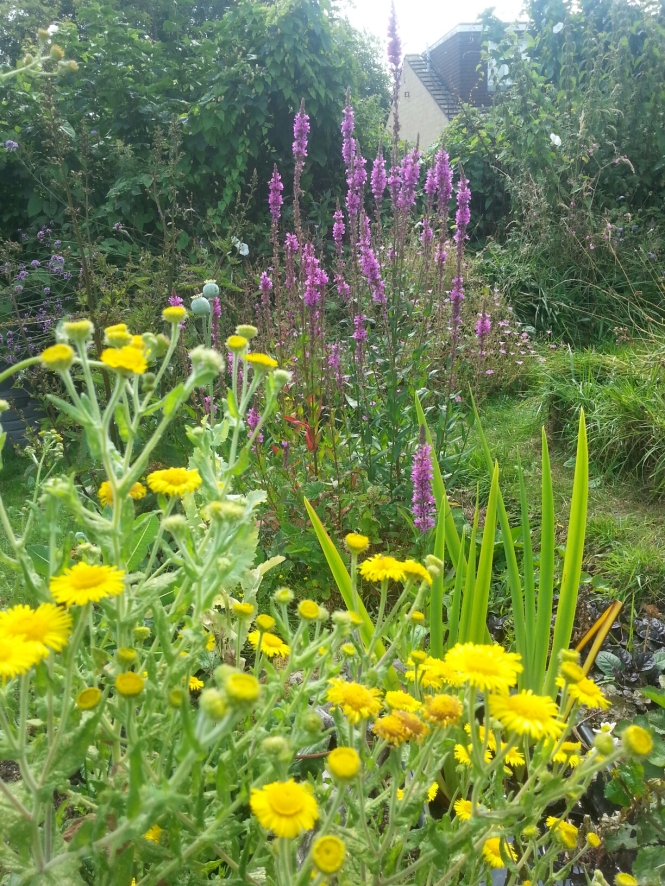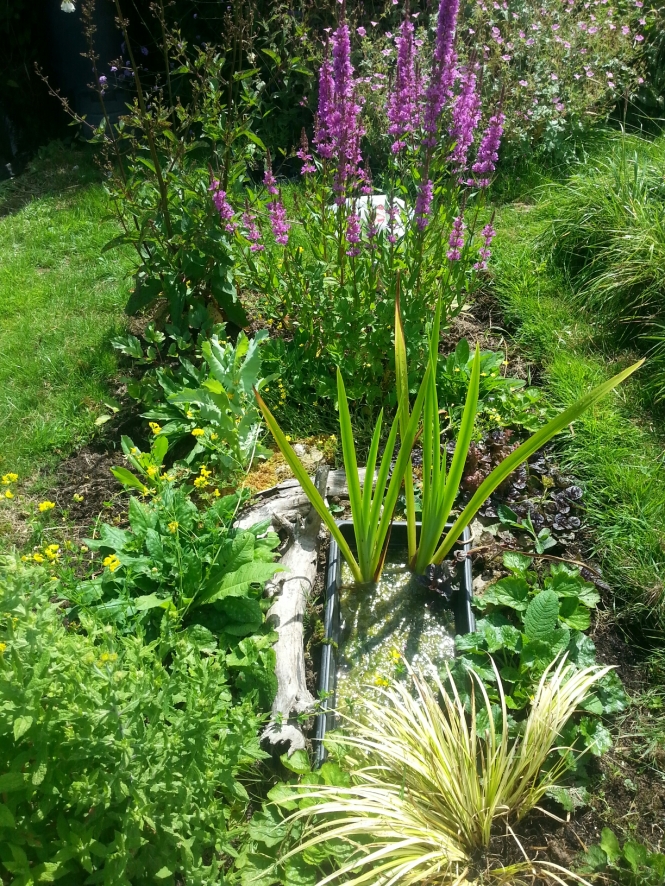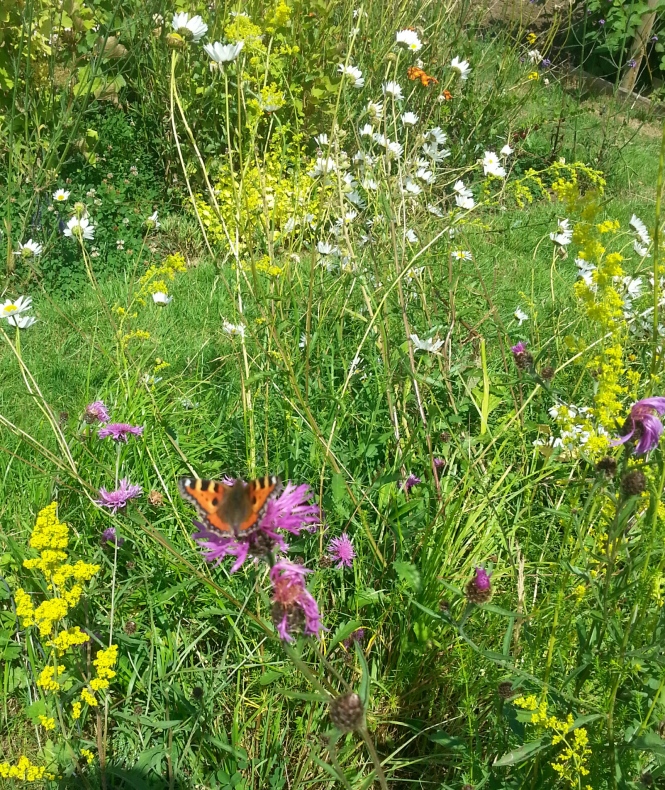If you are trying to establish a wildflower garden there are a number of ways of obtaining wildflower plants.
Each has its advantages; each is tempting in its own way.
So I thought I would share my experiences with each method.
Firstly, buying plants. This of course is the most expensive method, and let’s face it, obtaining native U.K. wild flower plants is not easy.
Although there are many online nurseries, the range of plants can be limited and with delivery added on buying plants can be costly.
Compared within cultivated varieties, native wildflower and wildlife plants are often more sensitive to planting conditions and this can result in expensive failures.
As a result I only buy wildflower plants locally from sources I trust and at a reasonable price. A good source is our local community farm which grows wildflower(and vegetable) plants to raise funds for it’s work at £1.50- to £2 a plant. You might also find plants at local farmers markets, school fetes etc., but I prefer to buy from sources where I can see plants growing.
Buying plug plants online can be cheaper than buying fully grown plants, and give you acess to a greater range of plants. However I would warn you that, particularly if you buy the smallest plug plants you are likely to suffer some quick losses due to the poor condition of plants on arrival and, in my experience it is not uncommon that you do not receive the number of plants ordered, and sometimes substitutions are made. In my experience the worst culprit for this is Thompson and Morgan. They have some tempting offers on plug plants, but rarely arrive in good condition and orders have been incomplete.
If you are going to buy plug plants, buy the larger options(often called Jumbo plus or Super plugs). These will have a higher survival rate and grow more quickly, but obviously cost more.
Seed balls(or seed bombs) are not particularly cheap(£4-£5 a tin of 20 for example), but are easier to “plant”. They also make great gifts as the packaging is very attractive. Each seed ball consists of hundreds of seeds, soil, clay to protect the ball and chilli powder to deter pests. Despite the attraction of “seed bombing” however, I have had zero success with simply throwing these seed balls into existing grassland. I would recommend clearing a small patch of ground before scattering them. Alternatively sow them in large pots on the patio. Visit Seedball
Growing from seed can be hard work and frustrating, but it is of course the cheapest method. There is a large, exciting range of wildflower seeds available on-line. Be warned, however, that getting some native wildflowers to germinate can be a challenge. I would recommend that you sow a few seeds continually throughout the year and ensure the seeds are exposed to cold nights as well as warm days. I prefer to sow single seed varieties rather than mixtures, so I know what has germinated and what has not. Easy wild flowers to germinate include Ox-eye Daisy, Cornflower, Purple Loosestrife, Scabious, Red Campion, Greater Knapweed, Vipers Bugloss. Nuts and Cones have a wide range at reasonable prices.



